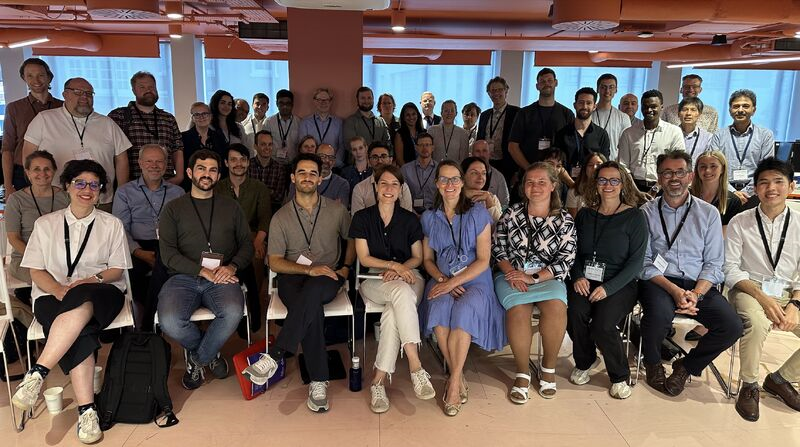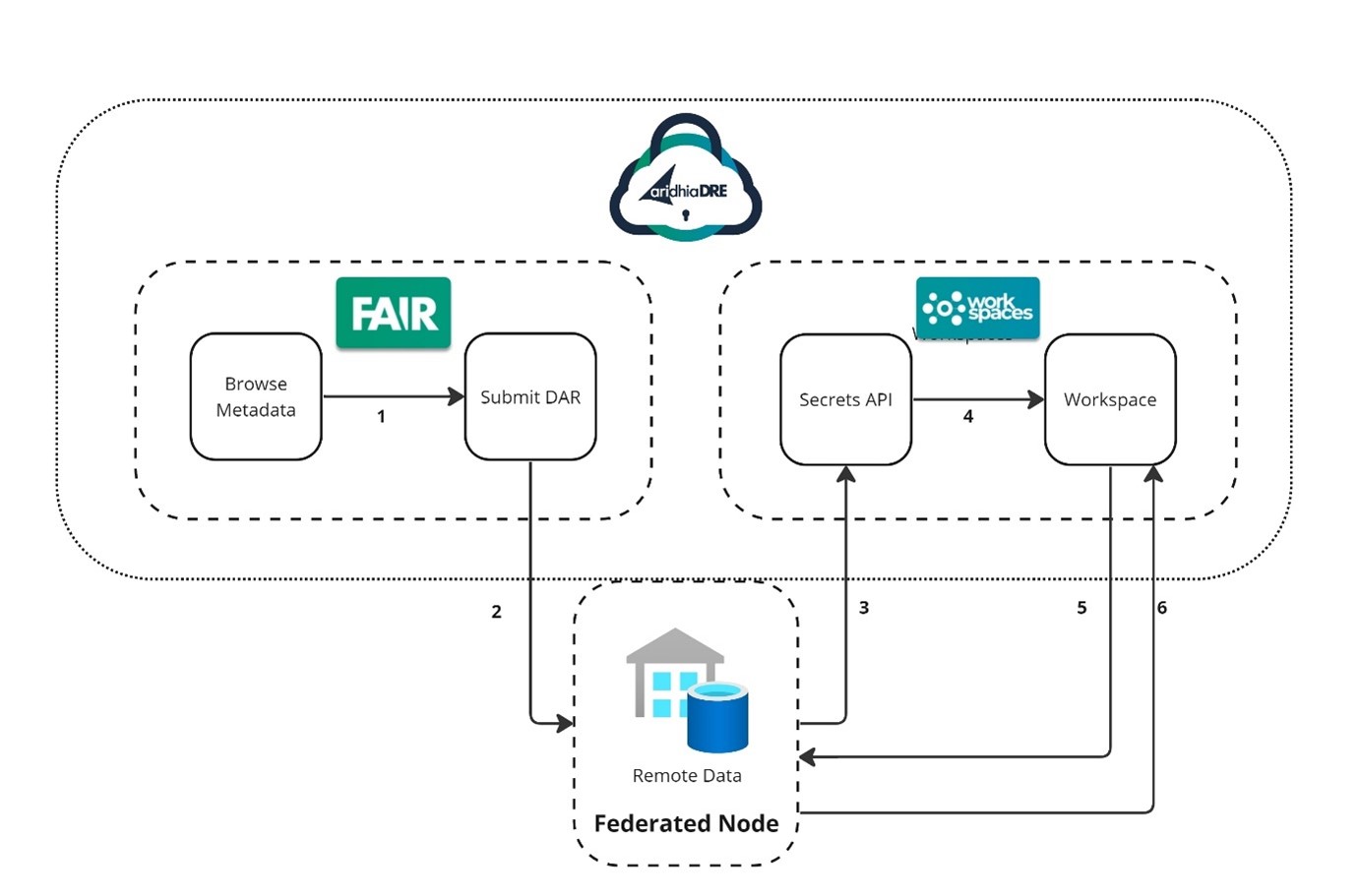Blogs & News
How the Aridhia DRE is Enabling Federated Analysis in the PHEMS Consortium
(This is the first in a series of blogs. Part 2 of this series (which focuses more on the Federated Node) is available to read here.)
In late June, Riccardo Casula, Scott Russell and I attended the PHEMS annual conference at Great Ormond Street Hospital in London. This was to demonstrate a new capability we are integrating with the Aridhia DRE in collaboration with our partners in the PHEMS consortium.

A group photo of people participating in the PHEMS consortium.
Who are PHEMS?
PHEMS (short for “Pediatric Hospitals as European drivers for multi-party computation and synthetic data generation capabilities across clinical specialities and data types”) is a Europe-wide consortium of paediatric hospitals that:
The consortium has two high-level use cases:
| Use Case 1 | Use Case 2 |
|---|---|
| Hospitals in the PHEMS network to share benchmarking data for clinical outcomes | Hospitals in the PHEMS network pool their data to train machine learning (ML) models |
Both use cases need to be met in a way that complies with GDPR and the national data protection legislation each partner is subject to. GDPR alone creates a substantial barrier to direct sharing of clinical data across research projects, and the different national data protection frameworks that the PHEMS partners operate under further complicate this situation.
As a technical partner of PHEMS, we are helping provide a data federation capability that will allow these important use cases to be met in a way that is fully compliant with all relevant data protection legislation.
What is Data Federation?
Typically when a project is granted access to clinical data, a copy of the data is transferred to a secure workspace environment where researchers can view the full dataset, view record level data, and perform their analysis on it directly:

Where direct sharing of data is not possible, as in PHEMS, data federation may be an appropriate solution. With data federation, researchers never have direct access to the dataset, cannot view record level data, and therefore cannot perform direct analysis. Instead they are granted permission to send approved analytics to the data, and then receive aggregate results when this analysis has been run:

Both PHEMS use cases can be achieved under this model, and in London we demonstrated a federated use case using the Aridhia DRE.
How are you providing federated analytics in the Aridhia DRE?
As part of the PHEMS consortium we are developing the Federated Node; a simple component for running federated tasks. This is based on an existing open standard for federated data sharing, the Common API, and the Federated Node itself will be made open-source later in 2024 when it reaches V1.0. We will blog on its implementation in more detail at that point.
For the PHEMS conference we integrated an early version of the Federated Node with the Aridhia DRE.
The DRE provides a metadata catalogue and data access request process through FAIR Data Services, and a secure environment for querying the federated data in Workspaces. The Federated Node is deployed in a remote environment with the data to be used in our federated analysis.

1 – Submit data access request
2 – Approve data access request
3 – Issue credentials for FN
4 – Access secure workspace
5 – Submit federated query
6 – Return results
This integration allowed us to demo a user browsing the metadata catalogue, finding a dataset of interest, and then requesting access to it. Once access was approved, we could then demonstrate calling the federated node from the workspace.
Our demo dataset was just a list of numbers, and the user could initiate a task from the workspace to return the average value of these, with the result displayed in a demo dashboard hosted in the DRE workspace.
Next Steps
From a technical perspective, our demo shows that the first PHEMS use case is now possible, and over the summer we are going to work with our partners in GOSH to create a more representative version of it using OMOP data and a more complex user dashboard. Later in the year will be preparing the Federated Node for its open-source release and begin planning the implementation of PHEMS use case 2 (Federated Learning).
We will continue to blog as the project reaches new milestones, but if you’d like more information please contact us here. You can also learn more about federated analysis on our data federation page.
July 3, 2024
Ross Stiven
Ross joined the Aridhia Product Team in January 2022. He is the Product Owner for FAIR Data Services, and Aridhia's open source federation project. He works with our customers to understand their needs, and with our Development Team to introduce new features and improve our products. Outside of work, he likes to go hill walking and is slowly working his way through Scotland's Munros.
